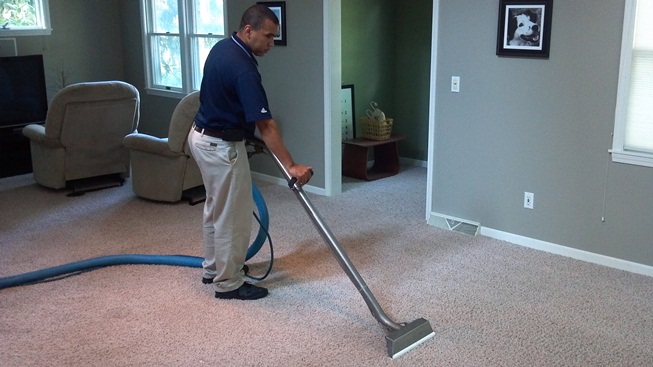Carpet Deep Cleaning: Rejuvenate Your Home with Specialist Care
Wiki Article
An In-Depth Check Out Rug Cleansing Types: From Steam Cleansing to Dry Cleaning, Which Technique Is Best for Your Demands?
When it pertains to maintaining the look and longevity of your rugs, selecting the proper cleaning approach is critical. With alternatives ranging from vapor cleaning, which stands out in deep sanitation, to dry cleansing techniques that deal with delicate fibers, the decision can be intricate. Each method offers distinct advantages and factors to consider that depend upon aspects such as carpet material and the degree of soiling. Comprehending these subtleties may expose shocking insights that might significantly affect your carpeting care technique, leading to a much more enlightened selection tailored to your certain needs.Introduction of Rug Cleaning Methods
While various rug cleaning methods exist, each strategy is made to address particular cleaning requirements and rug types successfully. Recognizing these approaches is crucial for selecting the most appropriate method tailored to individual circumstances.One of the most usual strategies is completely dry cleansing, which uses very little wetness and specialized cleaning compounds. This approach is specifically useful for delicate rug fibers that might be harmed by too much water (carpet deep cleaning). An additional common choice is warm water removal, usually described as heavy steam cleaning, which employs warmed water and cleaning up agents to remove dust and spots deeply embedded within the carpet fibers
Encapsulation cleansing is one more modern strategy, making use of synthetic detergents that take shape dirt particles. This approach is reliable and reduces drying time, making it ideal for business setups. In addition, bonnet cleansing uses a rotary barrier with absorptive pads to lift surface area soil, generally utilized in hotels and high-traffic locations for fast clean-ups.
Ultimately, the selection of carpet cleansing method rests on elements such as carpeting kind, degree of staining, and wanted results. By thoroughly taking into consideration these homeowners, variables and services can ensure the durability and look of their carpets.
Vapor Cleaning Explained
One of one of the most efficient carpet cleansing methods is vapor cleaning, likewise called hot water removal. This strategy utilizes high-temperature water, commonly heated to around 200 levels Fahrenheit, to pass through carpet fibers and loosen dust, spots, and irritants. The process starts with pre-treatment of heavily dirtied areas, complied with by the application of the warm water option. As the water is infused into the carpeting, it breaks down the gunk, permitting it to be efficiently eliminated.Heavy steam cleaning is particularly effective for deep cleaning carpets, as it not just gets rid of surface area dust however likewise eliminates bacteria and allergen, adding to a much healthier indoor atmosphere. The method appropriates for various kinds of carpets, consisting of those made from artificial and all-natural fibers.
After the extraction process, rugs may keep some wetness; nonetheless, with proper tools, drying out times can be significantly lowered. Normal heavy steam cleaning can prolong the life of carpetings while improving their appearance. In general, steam cleansing sticks out as a detailed service for maintaining tidy, fresh carpets, making it a recommended selection for both commercial and household settings.
Dry Cleansing Methods
Dry cleaning strategies provide an effective choice to standard steam cleansing, especially for carpets that might be sensitive to moisture or call for a quicker drying time. This method uses specialized cleaning solvents rather than water to remove dirt and discolorations, making it ideal for fragile textiles and carpetings that might be damaged by extreme wetness.
One more strategy employs solvent-based cleaning options, which are related to the carpet making use of a low-moisture method. This technique decreases the risk of shrinking or shade bleeding while effectively lifting discolorations.
Dry cleaning is specifically helpful for business setups or households with high foot web traffic, as it makes certain very little interruption. On the whole, these techniques offer a dependable alternative for maintaining rugs without the prolonged drying out times linked with damp cleansing strategies.
Comparison of Cleaning Methods
When examining numerous carpet cleaning techniques, it is vital to evaluate the advantages and downsides of each strategy to establish one of the most ideal choice for certain requirements. Heavy steam cleaning, commonly taken into consideration one of the most efficient technique, uses hot water extraction to remove deep-rooted dust and irritants. Nevertheless, it needs longer drying times and might not my latest blog post be excellent for fragile rugs.On the other hand, dry cleansing approaches, such as encapsulation and hood cleaning, provide quicker drying out times, making them extra hassle-free for property settings. These techniques utilize minimal dampness, which lowers the danger of mold and mildew growth yet might not accomplish the same degree of deep cleansing as vapor cleansing.
Shampooing is one more option, reliable for surface area dirt yet often leaves deposits that can draw in dust over time - deep carpet cleaning. carpet deep cleaning. Furthermore, it's labor-intensive and may call for expert intervention for thorough outcomes
Picking the Right Approach
Picking the ideal rug cleaning approach hinges on several variables, consisting of the type of carpeting, the level of staining, and the desired outcomes. Various carpetings, such as wool, synthetic, or natural fibers, react distinctively to different cleansing techniques. As an example, heavy steam cleansing, which utilizes warm water removal, works for synthetic rugs however may damage fragile fibers like wool.The degree of staining plays an important function in technique option. Heavily stained rugs might need deep cleaning methods like heavy steam cleaning or encapsulation, whereas lightly soiled carpets may benefit from less complex strategies such as completely dry cleansing or vacuuming.
Preferred outcomes likewise influence the option of cleaning method. If fast drying out is a top priority, completely dry cleansing techniques are better, as they call for marginal wetness. Alternatively, if the objective is to eliminate stubborn stains and allergens, vapor cleansing may be the much better choice regardless of longer drying out times.
Eventually, examining these variables assists professionals and homeowners make informed choices, making sure that the selected method not just cleans up effectively yet likewise preserves the honesty and durability of the carpet.
Conclusion
In conclusion, choosing a proper carpeting cleansing method hinges on particular rug kinds and specific cleansing needs. Steam cleaning offers depth and cleanliness, while dry cleaning supplies rate and comfort for moisture-sensitive products.
Report this wiki page